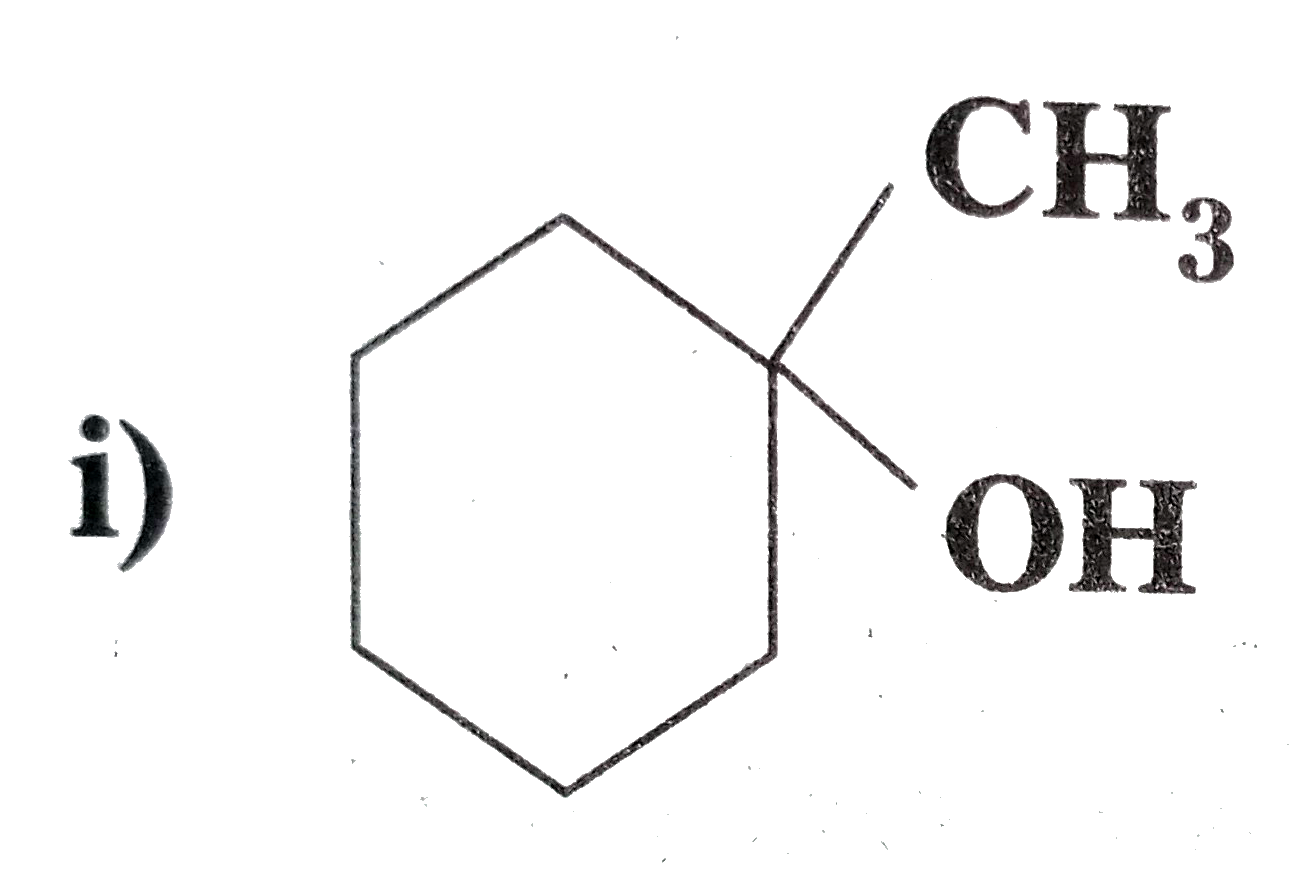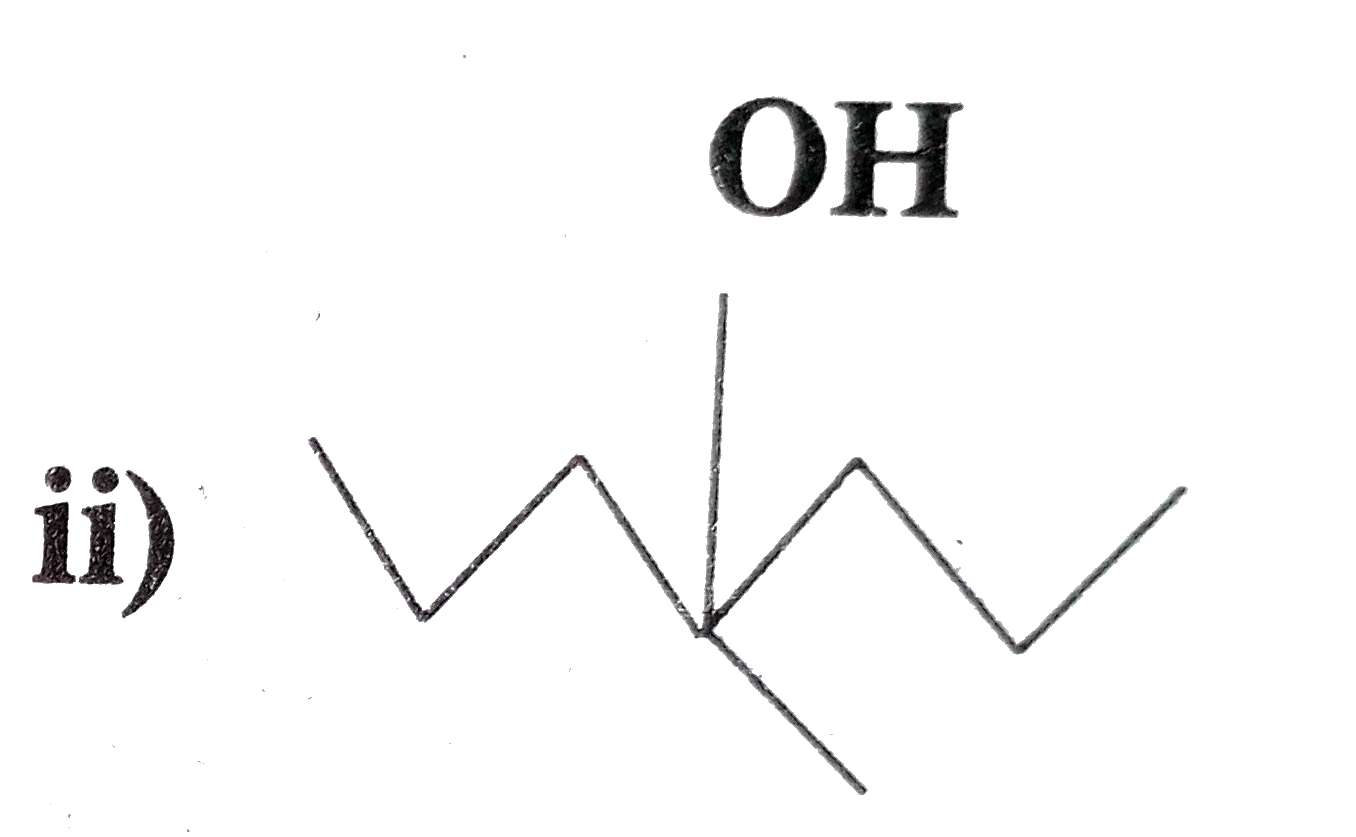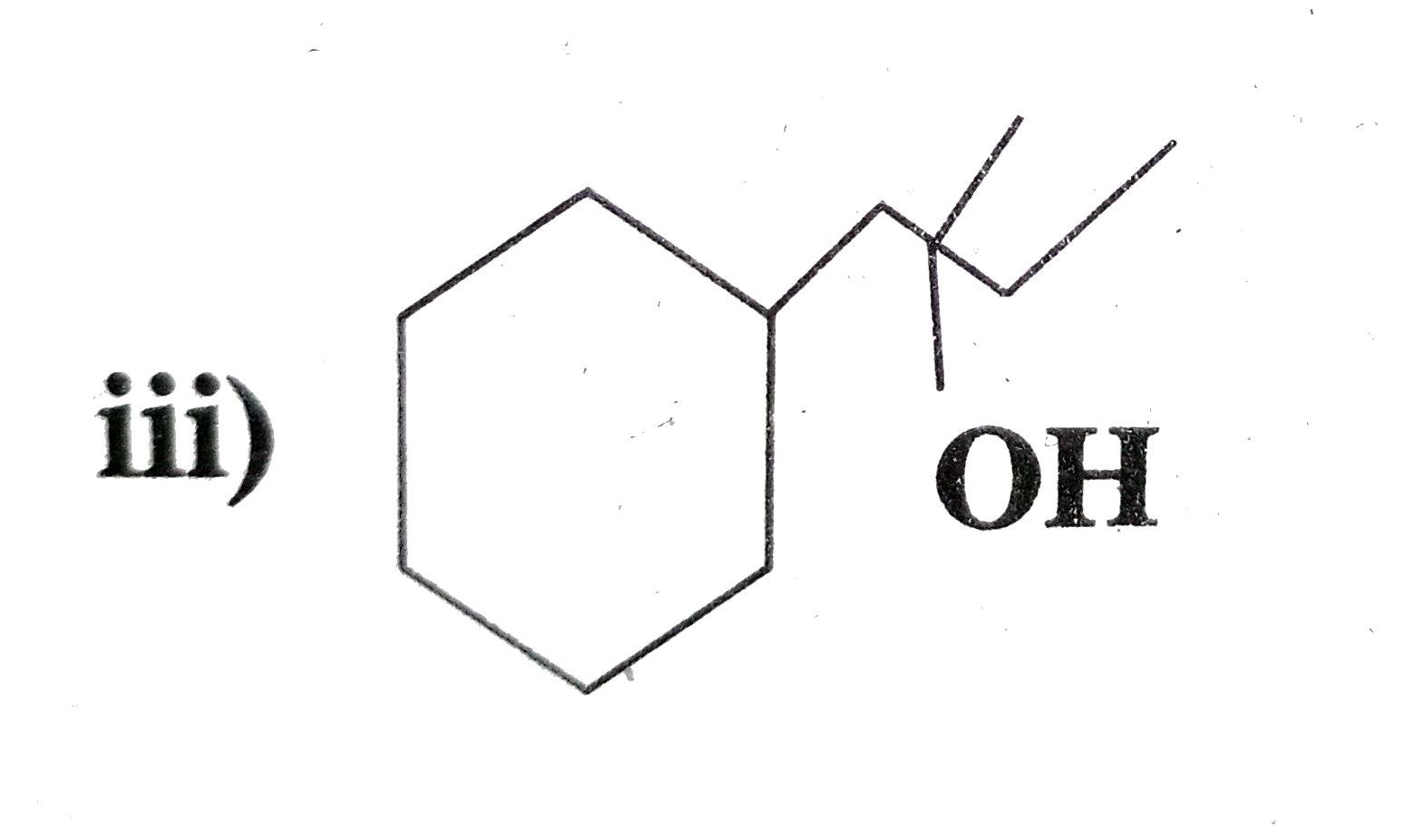Complete Solutions to LONG ANSWER QUESTIONS of chapter ORGANIC COMPOUNDS CONTAINING C,H AND O of Class 12 book with complete answers and questions
| Class 12 | CHEMISTRY |
| Chapter | ORGANIC COMPOUNDS CONTAINING C,H AND O |
| VIKRAM | LONG ANSWER QUESTIONS |
| Number Of Questions | 88 |
| Academic Year | 2023-24 |
Write the IUPAC name of the `CH_(3)-underset(CH_(3))underset(|)CH-underset(OH)underset(|)CH-underset(CH_(3))underset(|)overset(CH_(3))overset(|)C-CH_(3)` compound.
View SolutionWrite the IUPAC name of the `CH_(3)-underset(OH)underset(|)CH-CH_(2)-underset(OH)underset(|)CH-underset(C_(2)H_(5))underset(|)CH-CH_(2)-CH_(5)` compound.
View SolutionWrite the IUPAC name of the `CH_(3)-O-CH_(2)-underset(CH_(3))underset(|)CH-CH_(3)` compound.
View SolutionWrite the IUPAC name of the `C_(6)H_(5)-OC_(2)H_(5)`
View SolutionWrite structure of the compound whose IUPAC name is 2-Methyl butan-ol
View SolutionWrite structure of the compound whose IUPAC name is 1-Phenylprpan-2-ol
View SolutionWrite structure of the compound whose IUPAC name is 3,5-Dimethylhexane-1,3,5-triol
View SolutionWrite structure of the compound whose IUPAC name is 2,3-Diethylphenol.
View SolutionWrite structure of the compound whose IUPAC name is 1-Ethoxypropane.
View SolutionWrite structure of the compound whose IUPAC name is 2-Ethoxy-3-methylpentane
View SolutionWrite structure of the compound whose IUPAC name is Cyclohexylmethanol.
View SolutionWrite structure of the compound whose IUPAC name is 3-Chloromethylpentan-1-ol.
View SolutionWrite the equations for the preparation of phenol using benzene, conc. `H_(2)SO_(4)` and NaOH.
View SolutionIllustrate hydroboration -oxidation reaction with a suitable example.
View SolutionWrite the IUPAC name of the
 compound.
compound.
View SolutionWrite the IUPAC name of the
 compound.
compound.
View SolutionWrite the IUPAC name of the
 compound.
compound.
View SolutionWrite the IUPAC name of the
 compound.
compound.
View SolutionHow will you synthesise 1-Phenylethanol from a suitable alkene.
View SolutionHow will you synthesise Cyclohexylmethanol using an alkyl halide by an `SN^(2)` reaction.
View SolutionShow how will you synthesise:
(i) 1-phenylethanol from a suitable alkene.
(ii) cyclohexylmethanol using an alkyl halide by an `S_(N)2` reaction.
(iii) pentan-1-ol using a suitable alkyl halide?
View SolutionExplain Ortho nitrophenol is more acidic than Ortho methoxyphenol.
View SolutionExplain OH group attached to benzene ring activates it towards electrophilic substitution.
View SolutionWith a suitable example write equations for the Kolbe's reaction.
View SolutionWith a suitable example write equations for the Reimer-Tiemann reaction.
View SolutionWith a suitable example write equations for the Williamsons ether synthesis.
View SolutionHow is Benzyl chloride to Benzyl alcohol conversions carried out ?
View SolutionHow is Ethyl magnesium bromide to Propan-1-ol conversions carried out ?
View SolutionHow is 2-Butanone to 2-Butanol conversions carried out ?
View SolutionWrite the names of the reagents and equations for the preparation of the 1-Propoxypropane ethers by Williamson's synthesis .
View SolutionWrite the names of the reagents and equations for the preparation of the Ethoxybenzene ethers by Williamson's synthesis .
View SolutionWrite the names of the reagents and equations for the preparation of the 2-Methoxy-2-methylpropane ethers by Williamson's synthesis .
View SolutionWrite the names of the reagents and equations for the preparation of the 1-Methoxyethane ethers by Williamson's synthesis .
View SolutionHow is 1-propoxyropane synthesized from propan-1-ol ? Write mechanism of this reaction.
View SolutionExplain the fact that in aryl alkyl ethers the alkoxy group activates the benzene ring towards electrophilic substitution.
View SolutionWrite equation of the Alkylation of anisole reaction.
View SolutionWrite equations of the Nitration of anisole reactions.
View SolutionWrite equation of the Friedel-Crafts acetylation of anisole reaction.
View SolutionShow how you would synthesize the
 alcohols from appropriate alkenes ?
alcohols from appropriate alkenes ?
View SolutionShow how you would synthesize the
 alcohols from appropriate alkenes ?
alcohols from appropriate alkenes ?
View SolutionShow how you would synthesize the
 alcohols from appropriate alkenes ?
alcohols from appropriate alkenes ?
View SolutionShow how you would synthesize the
 alcohols from appropriate alkenes ?
alcohols from appropriate alkenes ?
View SolutionExplain why phenol with bromine water forms 2,4,6-tribromophenol while on reaction with bromine in `CS_(2)` at low temperature forms para-bromophenol as the major product .
View SolutionExplain the Cyanohydrin term. Give an example of the reaction .
View SolutionExplain the Acetal term. Give an example of the reaction .
View SolutionExplain the Semicarbazone term. Give an example of the reaction .
View SolutionExplain the Aldol term. Give an example of the reaction .
View SolutionExplain the Hemiacetal term. Give an example of the reaction .
View SolutionExplain the Oxime term. Give an example of the reaction .
View SolutionWrite structures of the `CH_(3)CH(CH_(3))CH_(2)CH_(2)CHO` compound according to IUPAC system of nomenclature .
View SolutionWrite structures of the `CH_(3)CH_(2)COCH(C_(2)H_(5))CH_(2)CH_(2)Cl` compound according to IUPAC system of nomenclature .
View SolutionWrite structures of the `CH_(3)CH=CHCHO` compound according to IUPAC system of nomenclature .
View SolutionWrite structures of the `CH_(3)COCH_(2)COCH_(3)` compound according to IUPAC system of nomenclature .
View SolutionDraw the structure of the 3-Methylbutanal compound.
View SolutionDraw the structure of p-Nitropropiophenone compound.
View SolutionDraw the structure of p-Metylbenzaldehyde compound.
View SolutionDraw the structure of 3-Bromo-4-phenylpentanoic acid compound.
View SolutionWrite the IUPAC names of the `CH_(3)CO(CH_(2))_(4)CH_(3)` ketones and Aldehydes. Wherever possible , give also common names.
View SolutionWrite the IUPAC names of the `CH_(3)CH_(2)CHBrCH_(2)CH(CH_(3))CHO` ketones and Aldehydes. Wherever possible , give also common names.
View SolutionWrite the IUPAC names of the `CH_(3)(CH_(2))_(5)CHO` ketones and Aldehydes. Wherever possible , give also common names.
View SolutionWrite the IUPAC names of the `PhCH=CHCHO` ketones and Aldehydes. Wherever possible , give also common names.
View SolutionWrite the IUPAC names of the
 ketones and Aldehydes. Wherever possible , give also common names.
ketones and Aldehydes. Wherever possible , give also common names.
View SolutionWrite the IUPAC names of the PhCOPh ketones and Aldehydes. Wherever possible , give also common names.
View SolutionDraw the structures of the 2,4-dinitrophenylhydrazone of benzaldehyde derivatives.
View SolutionDraw the structures of the Cyclopropanone oxime derivatives.
View SolutionDraw the structures of the Acetaldehyde hemiacetal derivatives.
View SolutionDraw the structure of the Semicarbazone of cyclobutanone derivatives.
View SolutionPredict the products formed when Cyclohexanecarbaldehyde reacts with PhMgBr and then `H_(2)O^(+)` reagents.
View SolutionPredict the products formed when cyclohexanecarbaldehyde reacts with following reagents.
(i) `PhMgBr` and then `H_(3)O^(+)`
(ii) Tollens’ reagent
(iii) Semicarbazide and weak acid
(iv) Excess ethanol and acid
(v) Zinc amalgam and dilute hydrochloric acid
View SolutionPredict the products formed when Cyclohexanecarbaldehyde reacts with Semicarbazide and weak acid reagents.
View SolutionPredict the products formed when Cyclohexanecarbaldehyde reacts with Zinc amalgam and dilute HCl reagents.
View SolutionWhich of the following compounds would undergo aldol condensatino ? Write structures of the products expected.
i) 2-Methylpentanal ii) 1-Phenylpropanone
iii) Phenyl acetaldehyde iv) 2,2-Dimethylbutanal
View SolutionAn organic compound with the molecular formula `C_(9)H_(10)O` forms 2,4-DNP derivative, reduces Tollens’ reagent and undergoes Cannizzaro reaction. On vigorous oxidation, it gives 1,2-benzenedicarboxylic acid. Identify the compound.
View SolutionHow do you distinguish the Propanal and propanone pairs of compound .
View SolutionHow do you distinguish acetophenone and benzophenone ?
View SolutionHow do you distinguish the Phenol and benzoic acid pairs of compound .
View SolutionHow do you distinguish the Pentan-2-one and pentan-3-one pairs of compound .
View SolutionHow are the Ethanol to 3-hydroxybutanal conversions carried in not more than two steps ?
View SolutionHow are the Bromobenzene to 1-Phenylethanol conversions carried in not more than two steps ?
View SolutionHow are the Benzaldehyde to `pm` Hydroxyphenylacetic acid conversions carried in not more than two steps ?
View SolutionHow are the Benzaldehyde to benzophenone conversions carried in not more than two steps ?
View SolutionDescribe the Acetylation .
View SolutionDescribe the Cannizaro reaction
View SolutionDescribe the Decarboxylation.
View SolutionComplete each synthesis by giving missing starting material, reagent or products

View SolutionComplete each synthesis by giving missing starting material, reagent or products

View SolutionComplete each synthesis by giving missing starting material, reagent or products

View SolutionComplete each synthesis by giving missing starting material, reagent or products

View Solution
LONG ANSWER QUESTIONS questions and complete solutions for chapter ORGANIC COMPOUNDS CONTAINING C,H AND O of VIKRAM PUBLICATION ( ANDHRA PUBLICATION) of Class 12